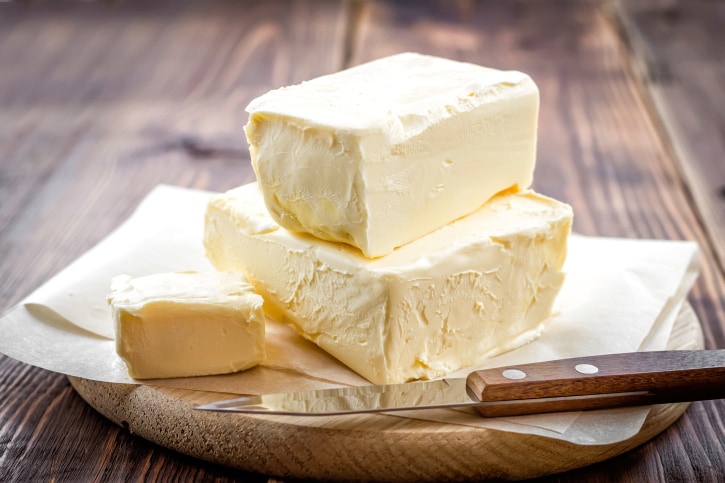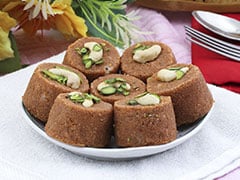Story ProgressBack to home
Margarine(Majarin or Banavati Makkhan)
Hindi Name:Majarin or Banavati Makkhan
Margarine is an imitation of butter. Back in 1869, it was originally created as a substitute for butter from beef tallow and skimmed milk. Now it is made mainly from the refined oils and fats. It is created by using hydrogen to harden vegetable oils.
- NDTV Food
- Nov 21 2014 13:23 IST
 Margarine is an imitation of butter. Back in 1869, it was originally created as a substitute for butter from beef tallow and skimmed milk. Now it is made mainly from the refined oils and fats. It is created by using hydrogen to harden vegetable oils. It contains 80% of minimum fat, same as butter. Margarine is harder than butter yet more spreadable. It may be available in the form of sticks, cubes, blocks, tubs or even sprays. It looks exactly like butter.
Margarine is an imitation of butter. Back in 1869, it was originally created as a substitute for butter from beef tallow and skimmed milk. Now it is made mainly from the refined oils and fats. It is created by using hydrogen to harden vegetable oils. It contains 80% of minimum fat, same as butter. Margarine is harder than butter yet more spreadable. It may be available in the form of sticks, cubes, blocks, tubs or even sprays. It looks exactly like butter.
Usage
It is used in cooking, just like regular butter is. It is used in cookies, pie crusts and other desserts. It is not recommended to use margarine for baking.
Nutritional Value
It is made through an artificial process. The process of hydrogenation (used to make the margarine hard and spreadable) causes the margarine to produce trans-fatty acids in the body. These acids are known to cause a problems of cholestorol, hardening of the arteries, and even cancer. Although it is a good source of vitamin A and k. The high temperatures at which it is created destroys the vitamin E and other nutrients. The hard, stick margarine are known to contain maximum fat than the spreadable one.








